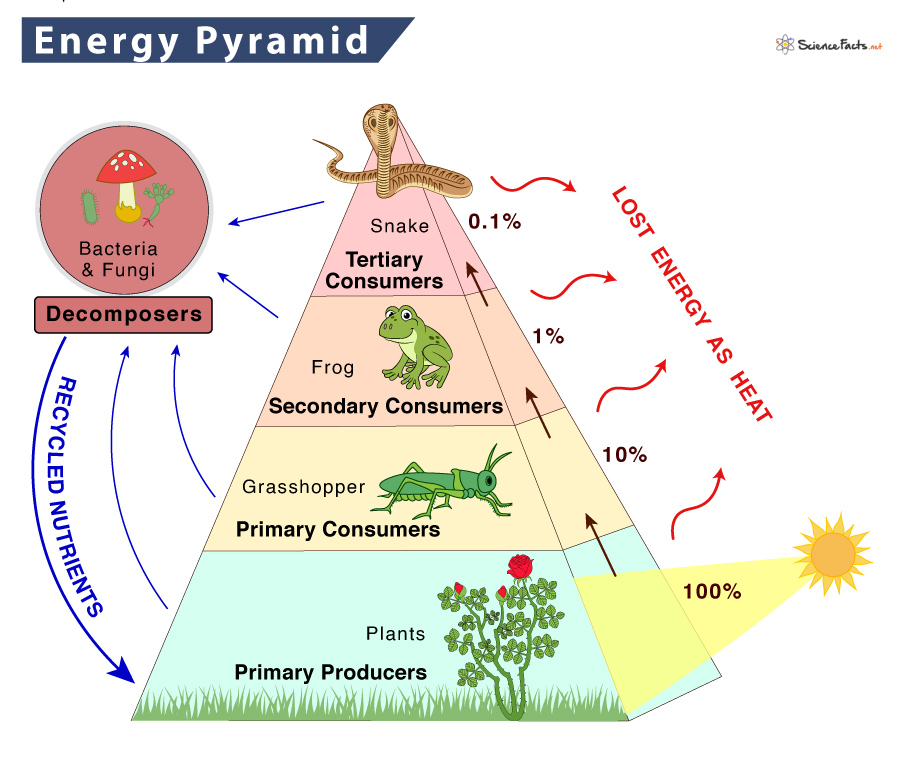Energy Pyramid
An energy pyramid, also known as an ecological pyramid or trophic pyramid, is a graphical way of representing energy flow at each trophic level within an ecosystem. It is similar to a food chain and establishes the predator-prey relationship.
The order of the bars representing each trophic level is based on which predator feeds on which prey. Energy flows from the bottom toward the top of the pyramid, decreasing as we move up. The height of the bars is the same. However, each bar has a different width based on the units of energy available.
Overall, the model represents the amount of energy at each trophic level. It also helps to quantify the energy transfer from one organism to another along the food chain. An energy pyramid follows the 10% rule, which says that about 10% of energy from each level reaches the level above it, and the rest remains unutilized.
Trophic Levels of Energy Pyramid
The four main trophic levels in an energy pyramid are:
1. Producers
Producers or autotrophs (grasses, green plants) occupy the first level or at the bottom of the energy pyramid.
2. Primary Consumers
The second trophic level is occupied by primary consumers or herbivores like grasshoppers that feed on primary producers for food and energy.
3. Secondary Consumers
The organisms occupying the third trophic level are known as secondary consumers. These organisms include carnivorous animals like frogs that feed on grasshoppers.
4. Tertiary Consumers
It is the last level of the energy pyramid consisting of organisms like owls, hawks, and foxes that consume both primary and secondary consumers for food. Only a mere 0.1% of the solar energy absorbed by producers reaches this level.
Quaternary Consumers
In some food chains, above the tertiary consumers are quaternary consumers or apex predators. They reside at the top of a food chain or an energy pyramid. Such organisms as humans, wolves, polar bears, lions, and tigers do not have natural predators of their own.
Sometimes a tertiary consumer is also the apex predator in the food chain.
Decomposers
Finally, decomposers also play an essential role in the ecosystem. They decompose the dead organic matter, wastes, and faces, thus helping to clean the environment. The breaking of organic matter provides nutrients to the soil that primary producers use to prepare food. It is the process of recycling energy in the ecosystem.
Example of Energy Pyramid
Grass, the primary producer, utilizes solar energy to produce their food, which grasshoppers, the primary consumer, eat. The grasshopper then transfers its energy to frogs, the secondary consumers. Frogs are eaten by snakes, the tertiary consumer in this food chain.
Upon death, the organic matter of the hawk is mineralized by decomposers, returning the nutrients to the soil. The producers can utilize the nutrients to continue the food chain.
-
References
Article was last reviewed on Monday, February 20, 2023




